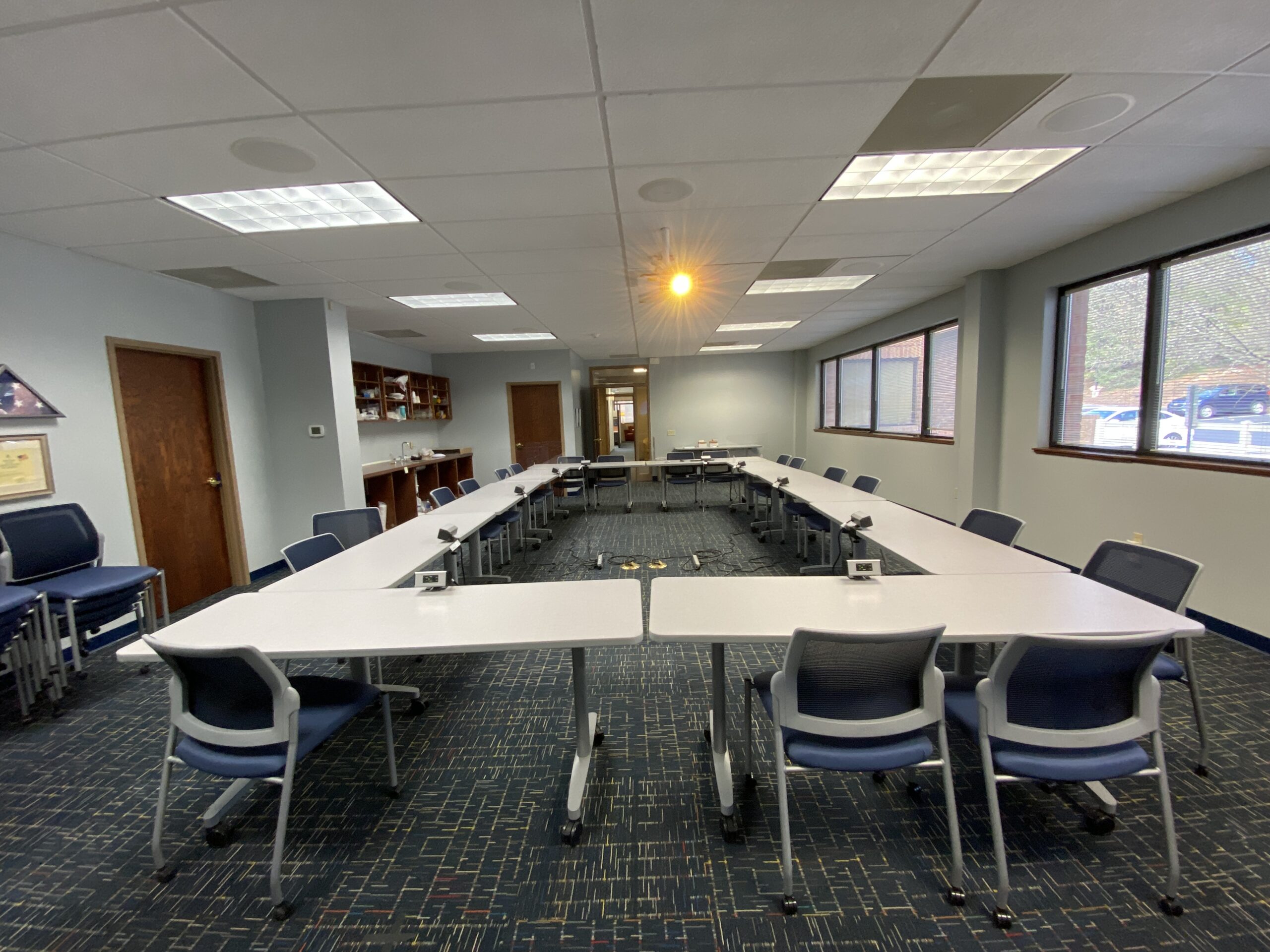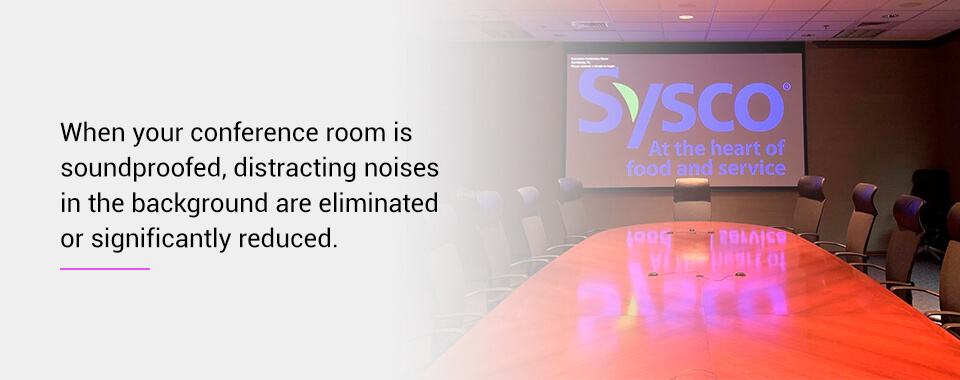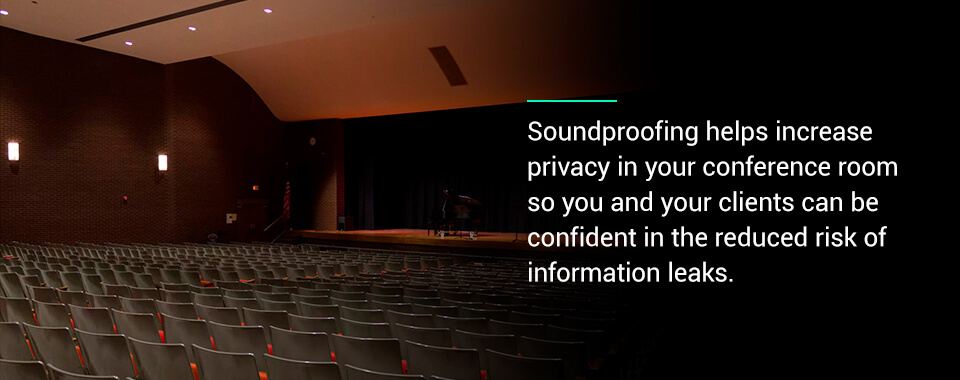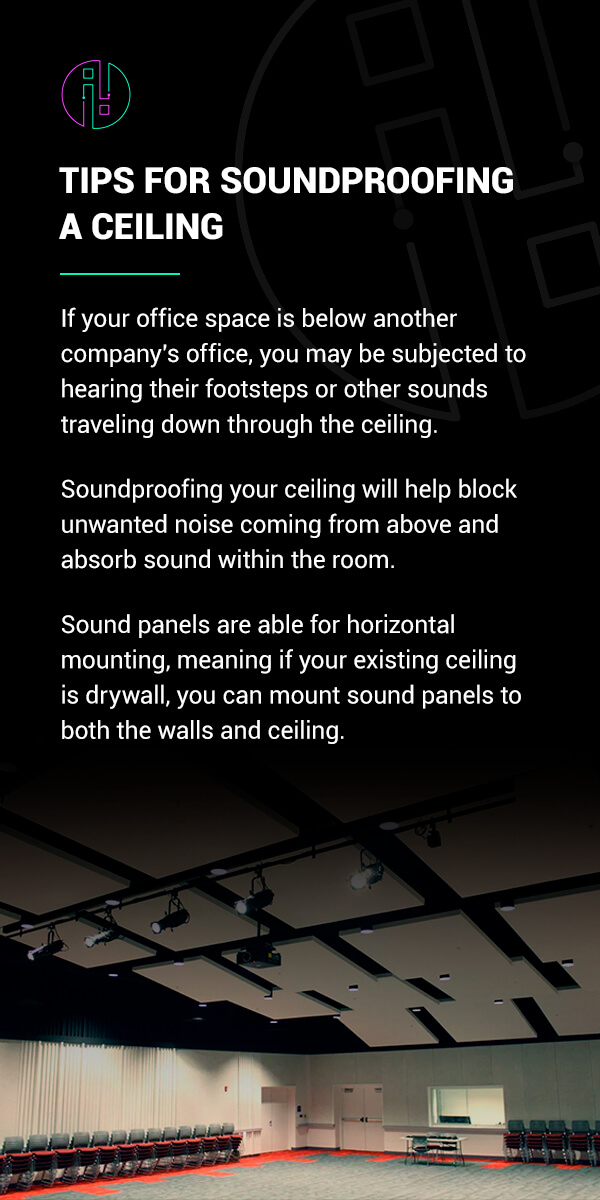

Corporate conference rooms are a space where important phone calls, deals and conversations can happen in privacy. However, sound transmission from outdoors or other nearby workspaces can be disruptive when you’re trying to speak with others. If you’ve found that sound and noise have become a distraction in your conference room or regularly disrupt meetings, consider how soundproofing the room can be beneficial.
Office spaces can be loud, especially as people chat, collaborate and answer calls. However, during an important meeting, you don’t want to hear sounds coming from outside the meeting rooms. Whether you’re on a conference call or presenting a sales pitch, you want to be sure you and your listeners can each other clearly. Consider some of the ways your office can benefit from a soundproof conference room:
From the walls and ceilings to the floors and tables, conference rooms are most often comprised of hard surfaces. Any sound waves in the conference room echo off of those hard surfaces. When sound echos, the room fills with repeating sounds and reverb, making it difficult to hear the original sound clearly. For example, if an employee is giving a presentation and their voice echoes in the room, the audience will find it difficult to hear the speaker clearly.
Soundproofing your conference room helps reduce echo and reverb off the hard surfaces, allowing the best sound possible. Soundproofing materials are less reflective than normal drywall or hard flooring. They’re typically made of softer materials and panels, significantly reducing the amount of echo heard in the conference room.
Without echoes and blurred sounds, the original sound will be much clearer. With crisp, clear sound, listening to speakers becomes easier as any sound is more defined, helping you and your employees communicate messages more effectively.

Any noise bleeding into your conference room from inside or outside the office can create a major distraction. Office chatter, street traffic, music or loud sirens can penetrate conference room walls and windows, pulling focus from the topic at hand. When people are distracted from a meeting or presentation, the content goes unheard or won’t be communicated as clearly.
When your conference room is soundproofed, distracting noises in the background are eliminated or significantly reduced. Noise reduction enables your employees to focus on their work or listen more closely to a meeting. Reduced distractions benefit all participants in a meeting or presentation, regardless if they’re speaking or listening. In general, a soundproof conference room creates a more respectful and effective meeting or presentation space.
Distractions are one of the biggest reasons office employees lack productivity. If you’re looking for ways to increase productivity during meetings or the work day in general, consider how a soundproof conference or meeting room can help. With fewer distractions, employees can focus more on their work, thus becoming more productive.
Whether you’re using the space for conference calls, a quiet workspace, a quick meeting or project collaboration, a soundproof conference room supports concentration and deep workflows. Providing your employees with a space that lets them concentrate helps them be more productive and get more high-quality work done. As your office becomes more productive, you’re more likely to see an improvement in your company’s profits and overall success.
If communication is challenging in your conference room, it may be due to excessive noise. With distracting noises, echoes and other reverb, you and your employees may have difficulty hearing and understanding each other. Communication over the phone or video calls becomes significantly more difficult with these extra noises present. For example, the person on the other end may struggle to understand you because they can hear their own voice echoing in the background.
Soundproofing can help resolve those problems, creating a more effective space for communication. You’ll likely find it’s easier to hear others when they’re talking, preventing the need to repeat things over and over. You can relay information and messages more efficiently and understand them more effectively when everyone can hear each other clearly. Plus, improved communication makes for a better work environment in general and can contribute to employee happiness.

Corporate meetings often contain private information like business deals, client information, valuable data and other sensitive information. Regardless of the type of sensitive information, the purpose of having a meeting behind closed doors is to keep that information private. If your conference room isn’t soundproof, others outside the room may be able to hear those private conversations. When this is the case, you could face liability risks.
Just as soundproofing prevents sound from bleeding into a room, it can also prevent sound from bleeding out. When discussing a private matter inside the conference room, anyone outside won’t be able to hear what’s being said. Soundproofing helps increase privacy in your conference room so you and your clients can be confident in the reduced risk of information leaks.
The sound quality in your office can significantly impact workspace quality. The working environment is a huge factor in an employee’s satisfaction with the office, and many employees consider it when deciding whether to stay with a company. When you provide your employees with a distraction-free work environment that supports and encourages concentrated work, they’ll be much happier.
Soundproofing your conference rooms or other areas of the office or corporate building helps make overall improvements to the workplace. With a better, more effective working environment, you’ll find your employees happier with their work environment. Having happier employees is beneficial for everyone. While it’s great for their mental health, employees can be up to 13% more productive when they’re happy at work, which is a huge benefit for your office as a whole.
Now that you know how beneficial a soundproof conference room can be, you may be wondering how to do it. You can soundproof many aspects of a conference room, including the walls, floors, ceiling, windows and doors. You may also have different options for each part of the room based on the desired look. Whether you’re designing a new conference room or looking for ways to soundproof an existing one, here are some tips to help you get started:
There are a few ways to soundproof conference room walls. One of the most common is acoustic sound panels. Sound panels absorb excess sound and echo in the room. You can easily mount them on existing walls or build them into a new room’s design. Sound panels are most effective when placed around the entire perimeter of your conference room to ensure high-quality room acoustics.
Another similar option includes acoustic partitioners, which are essentially mobile sound panels. You can use them to divide a larger room while maintaining the benefits of soundproofing and can move them in and out of the space as needed, which is beneficial for temporary meeting room situations.
If you’re looking for a more permanent soundproofing solution, consider designing your conference room with soundproof drywall or mass-loaded vinyl finishing. These materials are designed to add bulk to your walls, making them denser. The higher density aids in blocking sound.
Many modern offices opt for a high-end appearance, which most often includes hard floors. Whether it’s hardwood, tile or concrete flooring, these surfaces amplify noises and cause high reverberation levels. If your conference room flooring is a hard surface, adding thick carpeting or rugs can help soundproof the room significantly. Covering hard flooring with softer materials helps prevent echoes from bouncing around the room.
If your existing conference room has hard floors, consider adding a thick area rug to help absorb sound. If you’re designing a new conference room, opt for carpets rather than hard materials. The thicker the carpet or rug, the better it will absorb sound and echoes.

If your office space is below another company’s office, you may be subjected to hearing their footsteps or other sounds traveling down through the ceiling. To prevent these disruptions in your conference room, soundproof your ceiling. Soundproofing your ceiling will help block unwanted noise coming from above and absorb sound within the room. Luckily, soundproofing your conference room ceiling is a lot like soundproofing your walls.
Sound panels come in a variety of sizes, making it possible to use them in lieu of traditional ceiling tiles. Sound panels are also able for horizontal mounting, meaning if your existing ceiling is drywall, you can mount sound panels to both the walls and ceiling. Mineral board ceiling tiles are also a common option for ceiling soundproofing. This material is comprised of several layers, which helps manage room acoustics.
Windows are extremely beneficial for offices, as they let in much-needed natural light. Unfortunately, they can also let in a lot of street noise. Cars passing by, horns honking, birds chirping, dogs barking and other external noises can easily find their way into your conference room through the windows. To help prevent this, hang soundproofing curtains in conference room windows.
Acoustic curtains are thick and stiff because they’re typically made of layered vinyl and fiberglass. These materials aid in blocking out external noise and can also help prevent reverb within the conference room. Despite being stiff and bulky, they hang in your conference room like normal curtains with better benefits.
Acoustic window inserts are another viable option for soundproofing conference room windows. These inserts are made of acrylic and help block most external sounds. They’re easy to install and can seamlessly blend with your existing windows. When used in interior windows, acoustic window inserts can also help reduce some reverb in the conference room. The acrylic material can absorb some sound vibrations, though this option is most effective when used with other solutions.
If sound drifts through your conference room door, there are a few ways to better seal it and reduce noise. Noise could get in through, under or around the door, or the door may lack the thickness to block sound. Thick doors keep more sound out than thinner doors, though you can mount sound panels to add thickness to existing doors. Acoustic door panels work like wall and ceiling sound panels, reducing the sound that enters and exits the room.
Other options include adding soundproofing rubber or weatherstripping to your door’s perimeter. These materials help insulate and create air-tight seals around the door, helping prevent sounds from drifting through cracks or gaps in the doorframe.
While these methods are beneficial, be sure to check for a gap between the door and the floor. If there’s a significant gap, your soundproofing efforts will be wasted. Door sweeps can help fill that open space. They attach to the bottom of your door to fill the gap and block any noise that would otherwise find its way under. You may already use door sweeps to keep cold air from drifting under an exterior door — the same concept applies to soundproofing. An effective door sweep keeps sounds from bleeding out of or into the conference room.
There are many considerations that go into soundproofing a conference room. Here are a few additional tips to keep in mind when soundproofing:
Whether you’re hosting a conference, attending a conference call or holding a meeting for office employees, your conference room needs quality acoustics to ensure the best sound experience. Illuminated Integration offers a variety of acoustic services to help you design an improved space. We’ll handle your project from design to the building stage to ensure the process is seamless and high-quality results are delivered.
Contact us today so we can learn about your project!